Doggy Laundering Lawsuit
Deborah Howard, CAPS
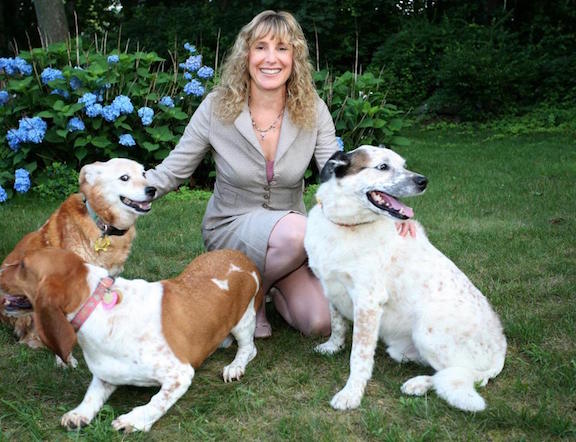 A lawsuit has been filed in a California court claiming Bark Adoptions masquerades as a non-profit animal rescue organization passing off puppy mill dogs as rescued animals and selling them for a profit. Because California has banned the sale of puppy mill dogs, it is believed multiple fictitious rescues are circumventing the law this way. Deborah Howard, founder of the Companion Animal Protection Society (CAPS) explains how her organization is trying to raise awareness on the issue.
A lawsuit has been filed in a California court claiming Bark Adoptions masquerades as a non-profit animal rescue organization passing off puppy mill dogs as rescued animals and selling them for a profit. Because California has banned the sale of puppy mill dogs, it is believed multiple fictitious rescues are circumventing the law this way. Deborah Howard, founder of the Companion Animal Protection Society (CAPS) explains how her organization is trying to raise awareness on the issue.
Deborah Howard is the President and Founder of the Companion Animal Protection Society (CAPS). Deborah explains that CAPS actually started this ordinance of banning the sale of puppy mills dogs and replacing them with the sale of rescue and shelter dogs with their West Hollywood ordinance in 2010. It wasn't the very first city to do this. Albuquerque was, but it didn't get any attention. At the time, CAPS was protesting elite puppies in West Hollywood and one of the council members came over. It turned out one of the dogs from the store had been sold to Arnold Schwarzenegger and they even had a picture of him in the store. So West Hollywood being progressive, wanted to do an ordinance. And because it's West Hollywood, it got worldwide attention.
After that, everybody wanted to do ordinances. Everybody was contacting CAPS from all over the country and Canada. This is what pretty much kicked off the movement that you see now. CAPS went on to do Los Angeles, San Diego, Glendale, South Pasadena and ordinances in other parts of the country.
The purpose of that ordinance is basically to get rid of the puppy mill dogs. Most people don't know that 99-percent of the dogs in pet shops come from puppy mills. By the way, there are also kitten mills and CAPS has investigated USDA licensed kitten mills as well.
In addition to Internet sales, pet stores are supporting the puppy and kitten mill industry. The demand is created because the consumers pay a lot of money for these dogs. People don't do their research and buying a puppy is usually impulse driven. There are even payment plans to cover the high prices of these animals. As a result, the puppy mills are sending their dogs to these pet shops. This happens all over the country and Canada as well.
But where there's money to be made, people are trying to circumvent these laws. Right now the only place where it's really happening is in California where CAPS has investigated 32 pet shops.
To circumvent this law, people are forming fraudulent rescues. Currently there are two of these (there's actually a smaller one, a third one, that's in a couple of the pet shops.) But the two main ones are fronts for dog brokers. One is an actual dog broker in Iowa who buys from puppy mills. CAPS investigated her and they turned over their investigation to the Iowa Attorney General last year. This woman was already selling puppies to three pet shops in California. She then started another rescue and puts the dogs through yet another rescue in California that is associated with a pet shop owner. A man who is actually a sales manager for the Hunte Corporation, which is another large brokerage facility, runs the other fraudulent rescue. So the dogs are actually coming from dog brokerage facilities, which obtain their dogs from puppy mills.
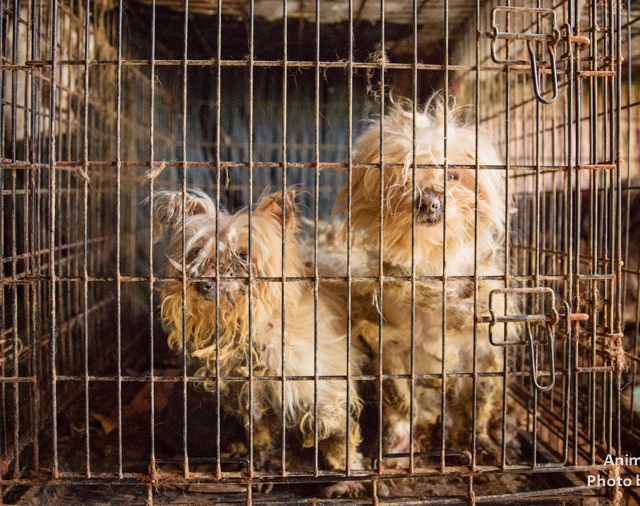 If you've seen these puppies in pet stores, they usually come at a high dollar when they're being sold. Are these dogs still being sold for $2,000 even if they are supposed to come from a rescue? Isn't there an assumption it would be a more of an adoption fee at a lower rate?
If you've seen these puppies in pet stores, they usually come at a high dollar when they're being sold. Are these dogs still being sold for $2,000 even if they are supposed to come from a rescue? Isn't there an assumption it would be a more of an adoption fee at a lower rate?
CAPS explains that they set out to investigate the remaining 19 pet shops selling puppies in the state. Three were claiming that they bred the dogs themselves or obtained them from a local breeder. CAPS then turned those over to animal control.
Sixteen of these shops were using the two fraudulent rescues. The dogs were anywhere from $1,000 to a $6,000 Bulldog. They come with warranty plans, because there's no lemon law anymore in California, so you're not protected if you get a sick puppy. You're just out of luck so you have to buy a warranty plan. You can also finance a dog. CAPS had a complaint for a woman who got a dog that had diarrhea and was 10 pounds underweight. She financed the dog at 65-percent a year. So that Labradoodle went from $3,000 to costing $8,500.
People just don't think. They may say, "Look at me, I got an eight-week, ten-week, or twelve-week-old purebred designer puppy and it's a rescue." And of course if you see CAPS video expose, you'll see they're very clear about where these dogs come from.
No one has been indicted yet, but CAPS has various attorney generals investigating this. Iowa was the only one that's formally announced it because CAPS got them involved last year when they started to see this happen in the pet shops. That particular rescue, Hobo Canine, is also selling to places in other states like New Jersey and Illinois. CAPS now has the attorney general in Illinois involved.
However, the main problem is really California, because there are 16 of them and Animal Control only has so much authority.
CAPS has extremely compelling evidence, they have a five minute video expose, they have an investigation of every single store, they have an in depth investigation report explaining all the characters that are involved and how they registered their rescues, and so on and so forth.
The law needs to be changed or re-written to change this loophole. CAPS has been asking Senator O'Donnell, who was a sponsor, to do that. So far they have not heard back from him. Deborah explains that there's a very easy way to close this loophole and she doesn't know what the holdup is. For instance, Massachusetts specifically says that a pet shop cannot have any monetary or ownership interest in the animals. They cannot benefit financially from the adoption fees. Deborah states that using that language will completely close out this loophole in California, and if that they'd done that in the first place, this whole thing could have been avoided.
One way to get around this as a consumer is to avoid the pet shops and adopt your pets directly from a rescue and make sure that it is indeed a true rescue.
Visit Website
Vegas Bats Positive for Rabies - What's the Risk? - Dr. Debbie
 Think your pet doesn't need a rabies vaccine because it lives indoors? Think again. Bats have been known to fly through open windows or chimneys. Dogs and cats that go outdoors are at risk for rabies exposure through wildlife. Felines that hunt and bring "presents" have added rabies risk.
Think your pet doesn't need a rabies vaccine because it lives indoors? Think again. Bats have been known to fly through open windows or chimneys. Dogs and cats that go outdoors are at risk for rabies exposure through wildlife. Felines that hunt and bring "presents" have added rabies risk.
Common questions about rabies:
What is Rabies?
Rabies is a viral disease causing encephalitis (brain inflammation) that affects all mammals including humans. The disease is almost always fatal. Over 55,000 people worldwide die of rabies every year, but fortunately U.S. human deaths are rare with 1 to 2 reported per year. Pet and farm animal rabies cases do occur in the U.S. though, usually after tangling with wildlife.
How is Rabies Passed?
Rabies is passed in saliva through the bite of a rabid animal. Less common exposures to rabies include aerosol transmission, mucous membrane contact or rare cases of organ transplant in humans.
What Are Symptoms of Rabies?
Excessive drooling, aggression, staggering and seizures are symptoms of rabies in animals. Wild carnivores, like coyotes, that avoid people are suspect if lacking fear and approaching humans. Nocturnal species like bats that are found out during daylight are also suspect for rabies.
What Kind of Animals Carry Rabies?
Although pet and human rabies cases in the U.S. are rare, the infection still abounds in wildlife reservoirs. In the Las Vegas area, bats are most commonly carriers, but other wildlife carriers include raccoons, skunks and foxes.
What Do You Do If You See a Sick or Dying Bat?
Avoid contact with sick or dying bats. Do not take sick bats to the veterinarian. Call Animal Control if any human or pet exposure to sick bat.
Despite the rabies concern, bats do have an important role in our ecosystem by consuming insects and pollinating plants. Not every bat has rabies, and there are other reasons bats die.
What Do I Do If a Person or Pet is Scratched or Bitten By a Bat or Other Wildlife?
If your pet gets into a fight with a skunk or raccoon, or plays with a dying or dead bat, there is potential for rabies exposure and a report should be made. Call animal control to have the bat or other wildlife picked up.
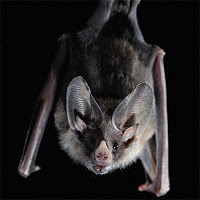 Possible rabies exposure is evaluated on a case-by-case basis. Because rabies is fatal, any humans with suspect rabies exposure should make a report to the local health department. Fortunately post exposure treatment for people is very effective in preventing disease, and doesn't involve painful stomach injections reported of long ago.
Possible rabies exposure is evaluated on a case-by-case basis. Because rabies is fatal, any humans with suspect rabies exposure should make a report to the local health department. Fortunately post exposure treatment for people is very effective in preventing disease, and doesn't involve painful stomach injections reported of long ago.
What Happens to Pets After Exposure to Suspected or Known Rabies?
Ultimately local rabies ordinances dictate how each case is handled. Pets with current or late rabies vaccinations may be quarantined for 10 days.
A pet that never has had a rabies vaccine may be promptly euthanized and tested for rabies. In other cases of unvaccinated pets, extended quarantine periods up to 6 months may arise.
What Can I Do to Protect My Pets and Family From Rabies?
- Vaccinate animals for rabies - this includes dogs, cats, ferrets and select farm animals.
- Teach children never to handle bats.
- Do not keep wild animals as pets.
- Spay and neuter your pets to decrease the desire to roam.
- Maintain control of your pets when outdoors or hiking to avoid accidental exposure to wildlife.
- Bat-proof your home and garage to avoid nesting sites and close encounters with bats.
- Report human bites from pets or wildlife to public health and animal control authorities.
Vaccination is key to protecting pets from rabies and offers peace of mind to pet owners and the Rabies vaccine is typically inexpensive.
Rabies vaccination…Just do it!
Featured veterinarian known as "Dr. Debbie" on national pet radio program, Animal Radio. Ebook author of "Yorkshire Terriers: How to Be Your Dog's Best Friend"; "Pugs: How to Be Your Dog's Best Friend"; "Mini Schnauzers: How to Be Your Dog's Best Friend"; and "Shih Tzu: How to Be Your Dog's Best Friend." Dr. Debbie's books.
Visit Website
 The Dogfather's Grooming Tip with Joey Villani
The Dogfather's Grooming Tip with Joey Villani
Preparing Your Dog's Coat For Spring & Summer
It's that time of the year to get your dog ready. Joey does this every quarter and what he means by this is that you need to get your pet's coat ready for spring and summer.
If you are the person who only grooms their pet 3 or 4 times a year and don't have them groomed every four to six weeks, you need to get them ready for the change of the season, which most of the country deals with, except for maybe Southern California and Florida. The rest of the country seems to have sort of seasons that change.
It's really important that you take care of the dogs that need to get that matted coat off. This needs to come off before the blazing sun appears and before they get sunburned. They might have a little bit of a coat growth as well as hair that needs to get out.
Whether you do it at home or you have professional groomer take care of it, just remember to get it done. This will leave their coat as a "working coat." When it gets warmer, many people don't realize that in a lot of situations by leaving coat on a dog, it actually keeps them cooler than taking it off.
Unfortunately Joey has a lot of clients who feel that their dogs should be shaved down because they're too hot. It doesn't work that way!
This kind of thinking puzzles Joey. He says it's sort of like us putting a pair of shorts on and then a pair of long pants. So what ends up happening in the wintertime is a dog that has a double coat will grow a thicker undercoat and a topcoat. The undercoat is cottony and the topcoat is straight and course. This includes most of your Wire Coated Terriers and all your northern breeds like Huskies, Samoyeds even Chows Chows.
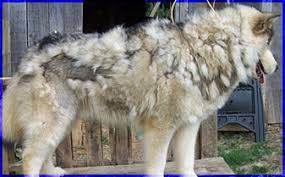 If you have one of these dogs and you're not sure what type of coat your dog has, just grab hold of your dog's coat if you can. If it's not long and flowing like an Afghan's or Shih Tzu's and it's short and dense, Joey can almost guarantee that's a double-coated dog. Also, if a bunch of hair comes off on your hand, because single long coated dogs don't shed all that much, it will be a double-coated dog because they will have hair everywhere.
If you have one of these dogs and you're not sure what type of coat your dog has, just grab hold of your dog's coat if you can. If it's not long and flowing like an Afghan's or Shih Tzu's and it's short and dense, Joey can almost guarantee that's a double-coated dog. Also, if a bunch of hair comes off on your hand, because single long coated dogs don't shed all that much, it will be a double-coated dog because they will have hair everywhere.
Now that being said, Joey says picture a pillowcase. If he ripped up his pillowcase, he'd have all those down feathers all over the floor. But the down feathers are really what keep your head warm or cold at night. Of course it's soft, because the pillowcase is the protection. So the topcoat of your dog is protection from the elements, it's protection from rain and it's protection from dirt and protection from snow.
Before we domesticated dogs, they were running wild bushes, trees and shrubbery, which helped to remove the hair for them. But our domesticated dogs are lying on the couch and they need help. If you don't remove it, what will end up happening is if it's warm outside, it will hold the heat in and not let it out.
Not only will your dog actually be hotter in the summer with a shaved down coat, but also as it grows back, it will change the growth pattern of the coat and wont look right. Can you correct this? Joey says you can, but it is a lot of work and will need to be done by a professional.
So you never want to shave your dog down, you just want to get out most of the undercoat so it can breathe and do its work. You want the topcoat to protect them from the sun, but you also want the coat to be able to release the heat in the summer.
In the wintertime, you want to leave a little bit more of that undercoat, because that's going to keep the heat down to their skin and keep them warm.
Animal Radio News - Lori Brooks
 Animal Occupations That Pay More Than $56,000 A Year
Animal Occupations That Pay More Than $56,000 A Year
If you've always wanted to work with animals, CNBC, one of the business channels, combed through data from the Bureau of Labor Statistics to identify the occupations that pay workers more than $56,000 a year and involve lots of quality time with animals. If you would rather spend your days in the company of coworkers who don't gossip or complain about you to the boss, then consider the following jobs (sadly, only five jobs made the cut). It's probably no surprise that veterinarians are the highest paid of these workers with a median yearly salary of $90,000 and projected job growth of 19-percent over the next 7 years. Zoologists and wildlife biologists also make the list with a median annual pay of $62,000. These researchers and scientists study animals and other wildlife to learn how they interact with their ecosystems. Farmers, ranchers and other agricultural managers make around $69,000 a year, but the projected growth is pretty slow. Animal scientists earn about $60,000 a year. They research ways to improve the safety and efficiency of agricultural practices relating to domestic farm animals and study an animal's genetics, nutrition, reproduction, growth and development as well as animal diseases. Fish and game wardens have a median annual pay of $56,000. They patrol fishing and hunting areas to ensure people are complying with federal, state, or local fishing, hunting and boating laws. Those who work at a federal level are more often called Federal Wildlife Officers. To become one, you'll typically need a Bachelor's Degree in a related field like wildlife science, biology or natural resources management.
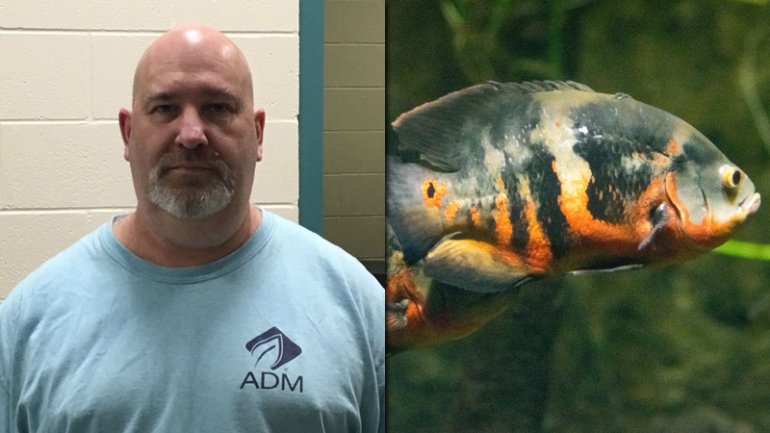 Man Charged With Abandoning Pet Fish
Man Charged With Abandoning Pet Fish
A North Carolina man has been charged with abandoning a pet fish that police say he left behind without food when he was evicted. Kind of unusual, but times are changing and how we think about animals is much different that it used to be. The 53-year-old man has been charged with one count of abandonment of an animal and three counts of misdemeanor cruelty because Oscar the fish was found poor health in a dirty tank. The 6-inch fish is being nursed back to health at an aquarium store. It's the county's first animal cruelty case involving a pet fish, but it is a life like any dog or cat.
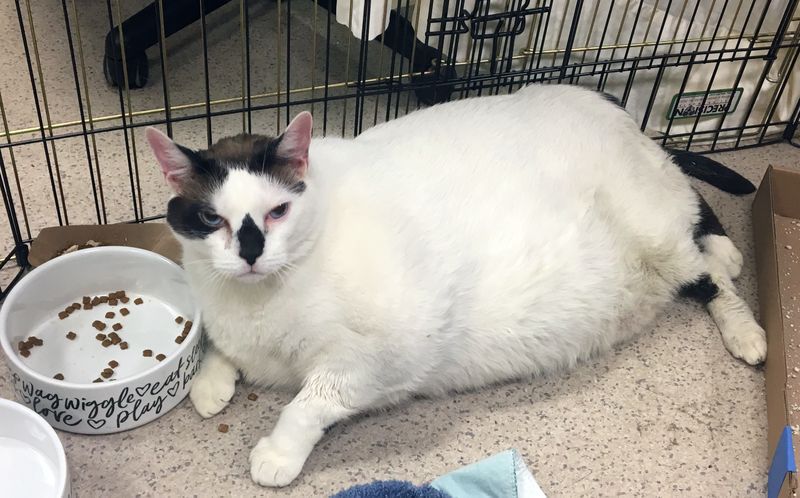 41-Pound Cat Up For Adoption
41-Pound Cat Up For Adoption
Animal Care Centers of New York City has put up for adoption a black and white cat named Barsik, who tips the scale at 41 pounds. At first his living quarters were a staff office because he's too big to be held in one of the shelter's cages. However, last week Barsik and his sibling were moved to a foster home run by a volunteer from a rescue in Manhattan.
Do Our Cats Understand Words?
Cats are almost always described as aloof but they know their own names and recognize it when we call for them, new research shows. Scientists found that our feline friends are able to tell their names apart from other words and have a grasp of words closer to a dog's than we think. The study was done at Sophia University in Japan, but American cat experts are not so convinced about the findings saying cats learn their name because it is one of the most common words spoken to them and likely associate it with rewards such as food, petting or play time. The lead author of the research says it sheds light on the human-cat relationship. However, Dr. John Bradshaw, an expert on dog and cat behavior at the University of Bristol, is less enthusiastic. He says, "In my view, the study doesn't tell us much about the cat-human relationship - merely that cats are capable of learning the significance of particular sounds - for example, many use the rattle of the cat-treat container to persuade their cat to come indoors." According to Dr. Bradshaw, that does not demonstrate that cats can understand human language.
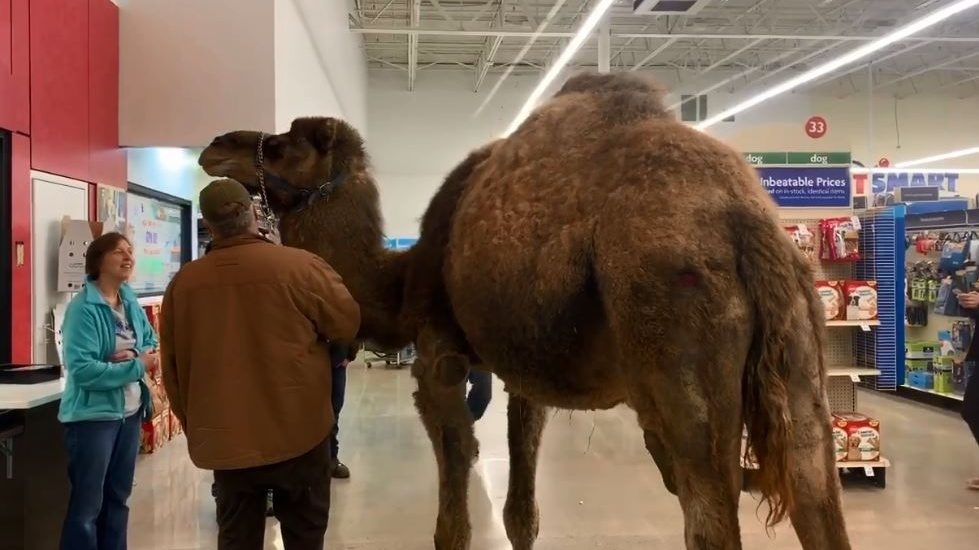 Camel Goes To PetSmart
Camel Goes To PetSmart
Hump Day was a few days early at a pet store in Michigan when the operator of a local petting zoo walked in with his camel, named Jeffrey, on a trip to their local PetSmart in order to get him used to traveling in a trailer. Jeffrey isn't a little baby camel; he's 11 years old and weighs 1400 pounds. The trip wasn't only for fun; Jeffrey was actually practicing for a trip to a weigh station where he can be accurately weighed for health reasons.
 Listen to the entire Podcast of this show (#1012)
Listen to the entire Podcast of this show (#1012)





